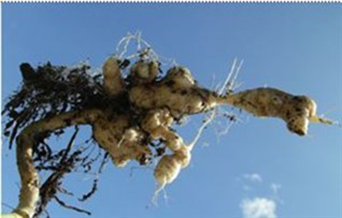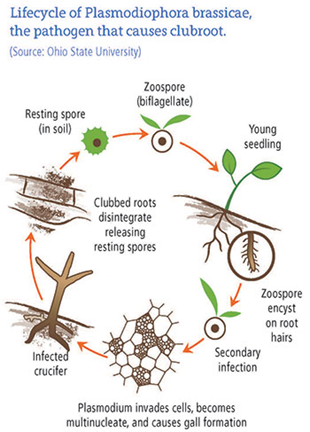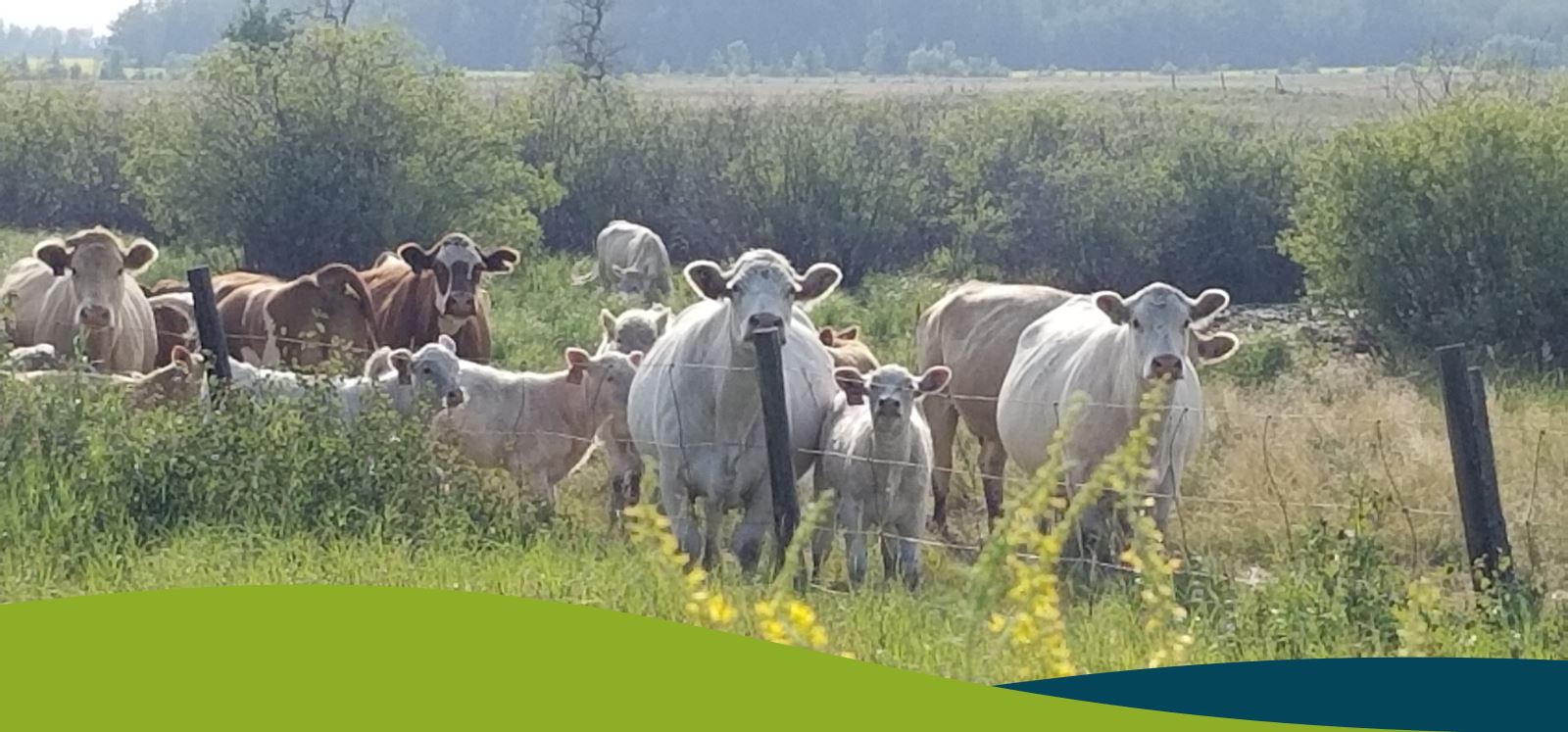Clubroot
The County of Two Hills No. 21 Clubroot Policy is intended to assist in the control and spread of clubroot of crucifers in the municipality. Random inspections will be conducted by the Agricultural Fieldman, Assistant Agricultural Fieldman or by an Inspector appointed by the County of Two Hills. Positive identification of clubroot will be obtained by a laboratory test.
Landowners will be notified in writing if their land tests positive and a Pest Notice will be issued.
To learn where Clubroot has been found in the County of Two Hills download the maps below:
- Clubroot Positives Map (2014-2017)
- 2018 Clubroot Testing Map
- 2017 Clubroot Testing Map
- 2016 Clubroot Testing Map
- 2015 Clubroot Testing Map
- 2014 Clubroot Testing Map
Individual fields that have tested positive for clubroot in the county are listed below. The year the Pest Notice becomes inactive is in parenthesis.
2020 Clubroot Positive Fields (2024)
NW 1-54-13W4
NE 26-53-13W4
SW 26-55-12W4
2019 Clubroot Positive Fields (2023)
SE 16-53-12 W4
SW 15-53-12 W4
SW 27-56-12 W4
NW 27-56-12 W4
SW 18-54-14 W4
NW 18-54-14 W4
SW 8-55-15 W4
S ½ of SW 18-55-15 W4
SE 33-54-13 W4
NE 31-53-9 W4
S ½ of NW 4-54-13 W4
SE 16-55-12 W4
2018 Clubroot Positive Fields (2022)
NE 31-53-13 W4
NW 5-54-13 W4
SE 14-56-13 W4
SW 31-53-13 W4
SW 28-53-13 W4
SE 31-53-13 W4
SE 29-53-13 W4
SW 34-54-13 W4
NW 27-54-13 W4
SW 15-54-13 W4
SE 30-53-13 W4
NE 30-53-13 W4
NW 10-54-13 W4
SE 21-53-12 W4
NE 36-55-12 W4
NW 36-55-12 W4
NW 11-55-12 W4
SE 25-53-10 W4
SW 10-53-9 W4
NW 10-53-9 W4
2017 Clubroot Positive Fields (2021)
NW 21-56-15 W4
SW 9-57-15 W4
NW 14-53-12 W4
SW 23-53-12 W4
SW 15-53-12 W4
SE 16-53-12 W4
NW 10-53-12 W4
SE 2-56-15 W4
2016 Clubroot Positive Fields (2020)
NW 3-54-13 W4
NW 33-53-13 W4
NW 32-53-13 W4
NW 5-54-13 W4
NE 31-53-13 W4
2015 Clubroot Positive Fields (2019)
SW 7-55-14 W4
SW 4-57-15 W4
NW 11-56-12 W4
SW 4-54-13 W4
NE 33-53-13 W4 (retest)
2014 Clubroot Positive Fields (2018)
NE 33-53-13 W4
WHAT IS CLUBROOT?
Clubroot is a serious soil-borne disease of cruciferous crops such as:
- Canola and mustard crops
- Vegetable crops such as broccoli, cauliflower, brussel sprouts, cabbage, radish, kohlrabi, turnip and kale
- Weeds such as wild mustard, stink weed and sheperd’s purse
Clubroot is caused by the pathogen Plasmodiophora brassicae which infects the roots of susceptible crops. In canola, it causes swellings or galls to form on the roots. Infection at the seedling stage can result in wilting, stunting and yellowing symptoms by the late rosette to early podding stage, while premature ripening or death can be observed in plants nearing maturity. Plants infected at later growth stages may not show wilting, stunting or yellowing, but may still ripen prematurely, and seeds may shrivel, thus reducing yield and quality. At the end of the season, the galls break down into the soil releasing millions of new spores and the cycle continues.

Currently, there are no economical control measures that can remove this pathogen from a field once it has become infested. Preventing the spread of clubroot spores through contaminated soil movement is critical to managing this disease.
Clubroot spores move readily with any soil movement. The primary mode of transportation is field-to-field by contaminated equipment. It can also move through wind, water, soil erosion and animals.
Clubroot spores can live in the soil for up to 20 years. The half-life of these spores is about four years - after four years, if there is no host available, half of the spores will no longer be viable. Tight canola rotations (1 in 2 year) allow for quick development of the disease once it has been introduced in the soil. Long rotations (1 in 4) are recommended to prevent disease development and to protect the breakdown of resistant traits in clubroot resistant canola varieties.
BEST MANAGEMENT PRACTICES
The following management practices are recommended in the Alberta Clubroot Management Plan:
- Use clubroot-resistant varieties in areas known to have clubroot.
- Use long crop rotations (three or more years) between canola crops to reduce disease severity and reduce other crop diseases. Fields with confirmed clubroot should use resistant varieties and follow crop rotation practices of one canola crop every four years. Note: Crop rotation will not eradicate the clubroot pathogen from the soil.
- Control volunteer canola and cruciferous weeds to prevent spore production on host plants.
- Practice good sanitation (cleaning and disinfection) of machinery and equipment, to restrict the movement of potentially contaminated soil.
- Seed and establish an area with grass near the field exit. A grass area will retain soil removed from equipment during cleaning.
- Implement soil conservation practices including minimizing tillage and using direct seeding as spores can move with wind and soil erosion.
- Minimize traffic in fields, especially during wet conditions. Discourage recreational vehicles from entering land.
- Fields with light infestations in the entrance can create a new vehicle approach at another edge of the field.
- Scout fields regularly and identify causes of wilting, stunting, yellowing and premature ripening.
- Avoid using straw, hay, manure and silage from areas known or suspected of clubroot. Clubroot spores may survive through the digestive tracts of livestock.
- Avoid common untreated seed (including canola, cereals and pulses). Earth tag on seed from infested fields could introduce spores to clean fields.
FURTHER INFORMATION
Alberta Clubroot Management Plan
Canola Council of Canada-Clubroot

